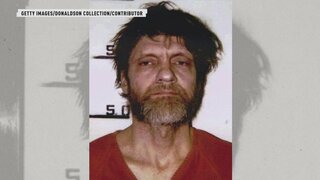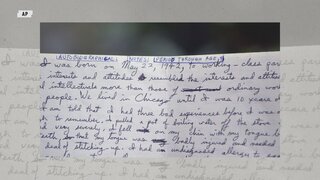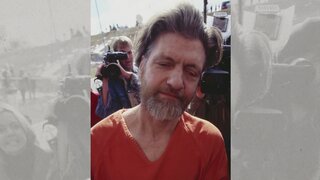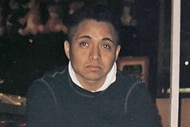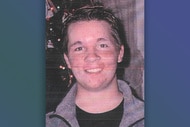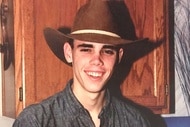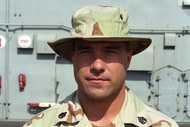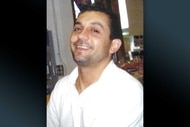Create a free profile to get unlimited access to exclusive videos, breaking news, sweepstakes, and more!
What Is The Origin Of Ted Kaczynski's Infamous Nickname 'The Unabomber'?
The name is related to the FBI investigation file that noted the Unabomber mainly targeted airlines and universities.
While the moniker “the Unabomber” for infamous domestic terrorist Ted Kaczynski is now a household name, the exact meaning and origin of the label may not be as well known.
Why exactly was Ted Kaczynski dubbed “the Unabomber”? Was it because he worked solo thus the term “uno”? Was it because he targeted universities? If that's the case, what's that singular "a" about?
RELATED: Who Were The Victims Of Unabomber Ted Kaczynski's Acts Of Terror?
The moniker was developed just a year into what would become Kaczynski's 17-year-long bombing campaign. He killed three people and injured 23 from 1978 to 1995. During that time, he mailed and hand-delivered 17 bomb devices, mostly targeting university professors and scientists as well as airline officials to make a statement about modern technology. He felt that technology was a system that humanity could not control and that it was something that would become increasingly harmful to both people and the environment. He wanted a revolution to halt technology's process before it caused what he believed to be irreversible damage. This led to his interest in targeting people behind airline technology.
One of his bombs was even found inside the cargo of a domestic airline — an American Airlines Boeing 727 travelling from Chicago to Washington — as it was flying, prompting an emergency landing. It did not fully detonate due to a faulty timing mechanism but it did partially explode, as shown in the docu-series “Unabomber - In His Own Words.” The 1979 partial detonation marked his third bombing. His two previous bombs were sent to Northwestern University in Chicago. Earlier that year, one of his bombs injured a graduate student. The year prior, Kacznski attempted to blow up an engineering student — but the effort was thwarted when a school security officer opened his package, who was injured as a result. His fourth bomb would target the president of United Airlines.
Surprisingly, none of the the passengers or crew were injured in the American Airlines bombing despite Kaczynski's intention to blow up the entire plane while it was in the air, according to the docuseries, which includes previously unreleased interviews with and about Kaczynski.
The American Airline bombing incident prompted officials to link him to previous bombings and at that point, the Federal Bureau of Investigation created a case file for the suspected serial bomber. Before this moment, the FBI wasn't even involved in the investigation of the bombing spree. In fact, they weren't even alerted to the bombings, legal analyst Lis Wiehl notes in her upcoming book "Hunting The Unabomber." The ATF agent who was assigned to investigate the two previous bombings "was transferred shortly after assuming responsibility for the cases, and the investigations were dropped and basically forgotten once he left his post," she wrote.
Nevertheless, when the FBI got involved, they created a case file and gave it a historic name.
“The FBI used the case identifier UNABOM referring to Ted's bomb attacks on universities and airlines,” Elliott Halpern, one of the filmmakers behind the docu-series, told Oxygen.com.
The “UN” was derived from the first two letters of university, the “A” from the first letter of airline and the “BOM” was pulled from the word bomber.
The UNABOM task force "would grow to more than 150 full-time investigators, analysts, and others," the FBI states. The task force was based in San Francisco, the area where the first two bombings occurred.
Reporters covering the bombings used the case signifier as a jumping-off point to create the menacing moniker "the Unabomber."
"It’s the media coverage which transformed the case name to the infamous nickname of the Unabomber which we refer to him as in today,” Halpern said.
Kaczynski continued to create bomb after bomb while evading arrest for nearly two decades — with the term Unabomber included in all the related headlines. Until his arrest, he would continue targeting people with connections to technology, which included computer store owners, geneticists, professors and other academics.
"As a daughter of academics, the Unabomber name certainly stuck fear into my heart growing up,” Elizabeth Trojian, another filmmaker behind the docuseries told Oxygen.com. "I was terrified that Ted might send a package to my parents, a fear many people lived during the FBI investigation."
It was his own writing and his own scathing hatred of technology that led to Kaczynski's capture. The FBI received his 35,000 word manifesto “Industrial Society and Its Future”, which explored his anger over technology, in 1995. He said if it was published, he'd halt his bombing campaign.
"After much debate about the wisdom of 'giving in to terrorists,' FBI Director Louis Freeh and Attorney General Janet Reno approved the task force’s recommendation to publish the essay in hopes that a reader could identify the author," the FBI stated. It was published the next year in The Washington Post and The New York Times. Kaczynski's brother David Kaczynski, who appears in the new docu-series, recognized the writing style and contacted authorities. He provided documents written by his brother and an FBI linguistic analysis determined he was indeed the author.
RELATED: From Hand-Carved Gifts To A Dead Dog: What's It Like To Be Neighbors With The Unabomber?
As a result, the FBI was able to track down Kaczynski at his remote Montana cabin in April 1996. A live bomb and a "wealth of bomb components" were found at the cabin alongside "40,000 handwritten journal pages that included bomb-making experiments and descriptions of Unabomber crimes," the FBI reported at the time according to ABC News.
In January 1998 and after a long legal battle, Kaczynski ultimately pleaded guilty to 13 federal charges linked to his Unabomber attacks in an agreement that saw him avoid the death penalty, the New York Times reported. In return, he was sentenced to life without the possibility of parole.
For several years, Kaczynski was held at ADX Florence, a supermax prison in Florence, Colorado — where drug lord Joaquin "El Chapo" Guzman and killer doctor Michael Swango are currently held — but was transferred to the U.S. Bureau of Prison's FMC Butner medical center in eastern North Carolina for undisclosed health issues in December 2021.
He was found unresponsive in his prison cell and was pronounced dead at a local hospital in June 2023. Four people familiar with the situation told the Associated Press he committed suicide. He was 81.
(This story was originally published on February 21, 2020. It was updated on June 12, 2023.)
